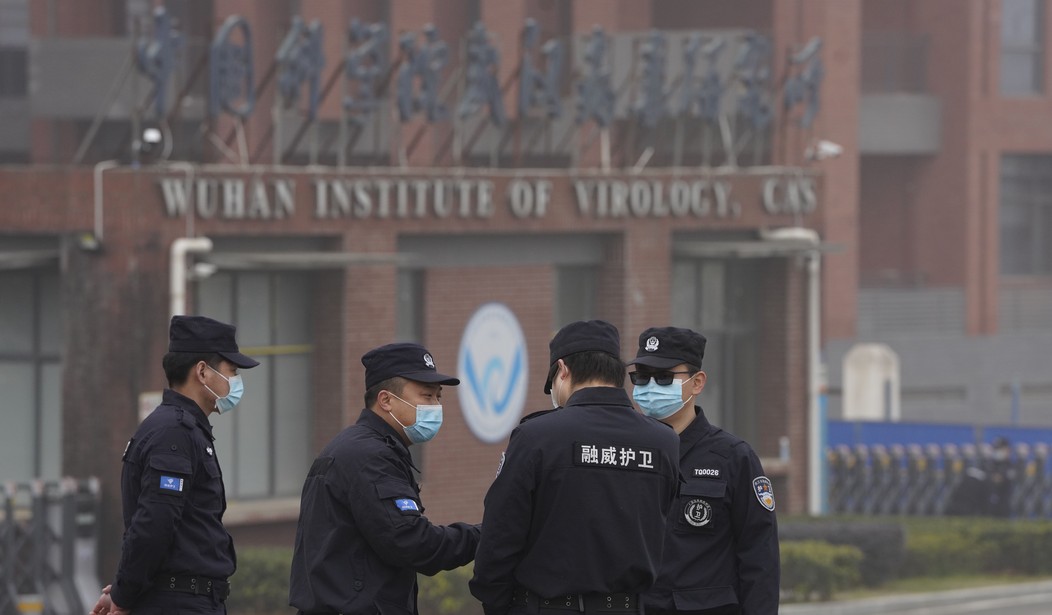Another set of bombshell documents has dropped related to EcoHealth Alliance and the research it intended to do in partnership with the Wuhan Institute of Virology. In a grant proposal for EcoHealth Alliance, Dr. Peter Daszak requested more than $14 million from the U.S. Department of Defense’s Defense Advanced Research Projects Agency (DARPA) to continue playing with bat coronaviruses with the Bat Lady, Dr. Shi Zhengli, and the University of North Carolina’s Dr. Ralph Baric, among others. This article is the first in a series breaking down how these documents could foreshadow the next pandemic and how they may provide a direct throughline to the one we are dealing with now.
Today, a group of sleuths and scientists investigating the origins of COVID-19, going by the name D.R.A.S.T.I.C., posted leaked proposal documents, which were authenticated by a former Trump official, from a project called DEFUSE. EcoHealthAlliance submitted the proposal to DARPA in 2018, While DARPA eventually rejected the proposal from EcoHealth Alliance, it is possible the research continued using another funding source.
DARPA announced the PREEMPT (PREventing, EMerging Pathogenic Threats) grant opportunity. It solicited proposals for research to develop new tools and models to quantify the likelihood of a virus to jump from an animal host into humans. It also sought to develop and validate new technologies to target the potential human pathogens in their animal hosts to prevent transmission to humans.
The agency wanted to develop scalable technologies that agencies could use on more than one animal or insect reservoir. The goal was to prevent an outbreak among members of the military in areas where endemic and emerging diseases are common. The technologies included validated predictive models and new methods to prevent viruses from infecting intermediary species and humans. The projects were considered proof-of-concept, and DARPA required proposals to assess the ethical, legal, and societal implications. It is obvious they were inviting research that would mess with Mother Nature, which carries inherent risks.
Recommended: What’s Your Actual Risk of Dying From COVID?
EcoHealth Alliance proposed sending researchers into bat habitats in Yunnan Province, China, using only personal protective equipment. In the proposal, there is an astonishing admission:
We now have published direct evidence of spillover of novel SARSr-CoVs into people in Yunnan Province, China, close to a cave complex where we have isolated strains that produce SARS-like disease in humanized mice, but don’t respond to antibody treatment or vaccination. These viruses are a clear and present danger to our military and global health security because of their circulation and evolution in bats and periodic spillover into humans. [Emphasis original]
Okay, wait a minute. There are SARS-like coronaviruses making people sick sometimes in Yunnan Province that these geniuses know about. They collected them, took them back to a lab, and put them in mice with humanized lungs, knowing they can make people sick. Where are these samples now? In China? That sounds like a recipe for another global disaster.
Coronaviruses are all enveloped, single-strand RNA viruses. So are influenza viruses. If we know these viruses exist and can infect humans, why isn’t the emphasis on finding therapeutics that address the features coronaviruses have in common? They are respiratory viruses passed through the air or droplets. To date, they all have a similar disease progression that occurs in phases. Early symptoms include those that accompany the common flu and colds. People experience some upper respiratory symptoms and may feel achy, tired, and have a fever. The illness may progress to an inflammatory stage that includes shortness of breath and clotting. Finally, they can cause immune system deregulation that can be fatal, sometimes referred to as a cytokine storm.
Some innovative researcher should be able to find a therapeutic or combination of them that interferes with the ability of a single-strand RNA virus to make copies of itself. If we could stop them from hijacking the human cell, we would be well on the way to early outpatient treatment for any virus with that construction. We know some existing therapeutics do that—zinc, for example. Ivermectin and hydroxychloroquine also change pH and have other actions that interfere with viral replication. Maybe Merck’s new drug Molnupiravir is the answer. The point is, we know what these viruses have in common and should be able to attack them.
Related: Pfizer Says Its COVID-19 Vaccine Is Safe for Kids… So What?
We have a host of drugs that have anti-inflammatory and anti-coagulant (clotting) actions. Protocols also exist for treating immune system dysregulation based on the presentation of the patient. It seems that these could be refined to be the first line of defense during an outbreak of a new strain of flu or a coronavirus. In reality, none of them will be novel. We know the basics. We live in the 21st century, and we have an amazing array of existing therapies at our disposal in order to help figure it out.
A project like this should be of particular interest to an organization like the World Health Organization. It is easier to plan for increased production of existing medications for rapid deployment globally than to develop a vaccine for a virus that has not settled into an endemic pattern. Increased breakthrough infections signal that the one designed for COVID-19 will need an overhaul quickly, and the number of needless deaths early in the pandemic emphasizes the need for effective early treatment.
The world cannot afford to get caught flat-footed again. Being prepared is the entire argument for this type of research. They already failed to deliver once.










